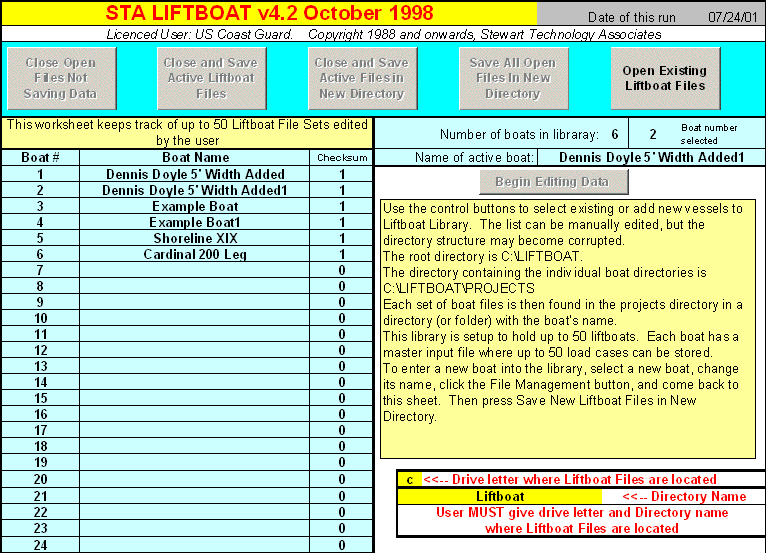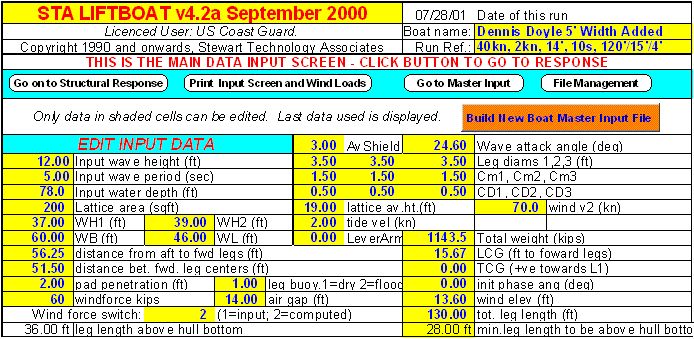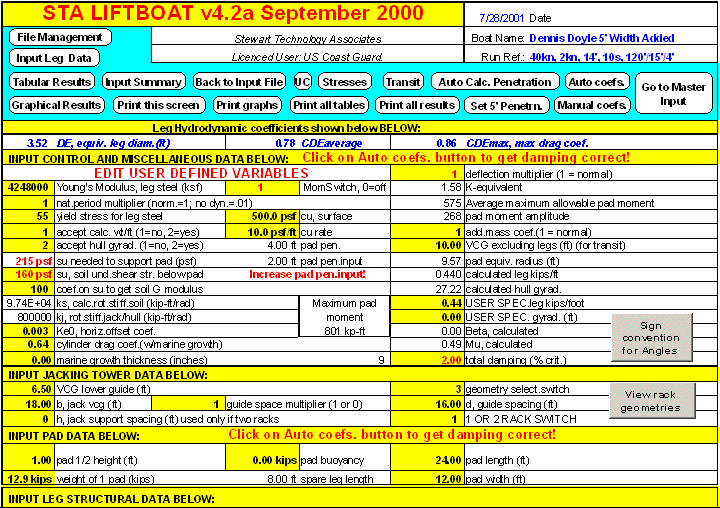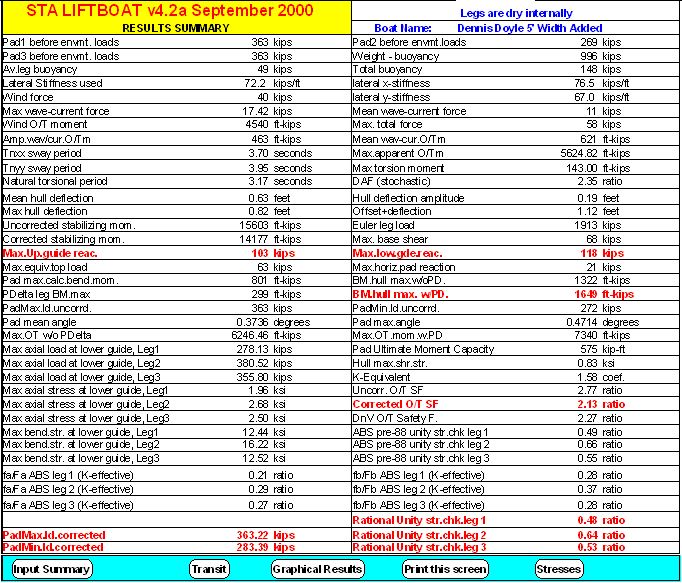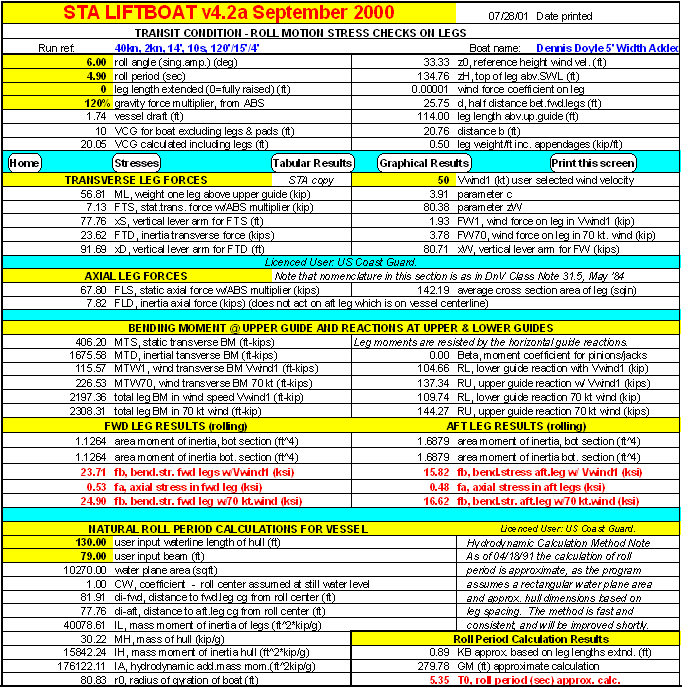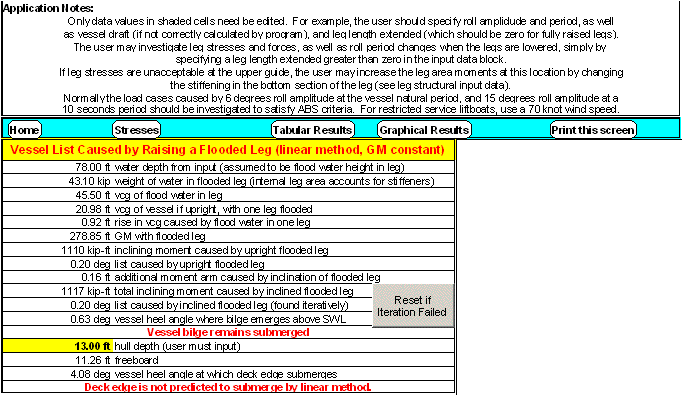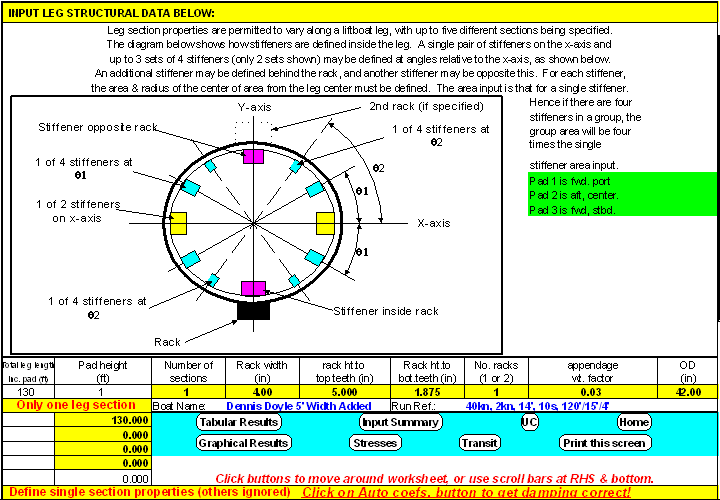|
STA LIFTBOAT is a program for preliminary design and design verification of three (independent) legged liftboats. It is used by liftboat designers and by the US Coast Guard. The purpose of STA LIFTBOAT is to calculate the structural response and pad reactions of liftboats in the elevated mode, subject to environmental and gravity loads. The program accounts for wind loading on exposed sections of legs in the air gap and above the hull, as well as on the hull and superstructure, including the crane. Wave and current loads are calculated on the legs below the still water level and in the splash zone. Shallow water wave theory is used, as embodied in the ABS MODU Rules and the legs are modeled as equivalent cylinders with the correct equivalent diameter, drag coefficient and inertias which represent the full leg (with rack). The drag coefficient varies with wave attack angle, being strongly influenced by the rack (or racks) on each leg. A graph of drag coefficient with wave attack angle is produced by the program once the user has input the rack geometry. The opening screen is shown below:
In order to calculate structural response,
the vessel is treated as having a relatively stiff hull.
Structural flexibility comes from the legs and the leg/hull
connection. Rotational stiffness provided to the pad at
the soil structure interface is also modeled. The structural
characteristics for each unit to be analyzed are based primarily
on the leg structural properties as input by the user.
The user may alter the loading condition of the boat, the water
depth, the air gap, the amount of pad penetration into the sea
bed, and environmental conditions. Additionally, the user
may control the stiffness of the pad restraint provided by the
soil, by specifying soil strength and a coefficient used by
the program to find a soil shear modulus. Alternatively
the user may allow the program to calculate the minimum (cohesive)
undrained shear strength of the soil necessary to give bearing
support to each pad.. The user-specified soil stiffness
may be varied from zero, representing a pin joint, through to
completely fixed, if desired.
In version 2.0 (and onwards) of the program,
the ultimate moment capacity of the soil is reported based upon
either the user-specified value for the soil strength, or based
upon the minimum soil strength necessary to provide bearing
support to the pads. If the user specifies a large degree
of fixity at the sea bed, or a rather stiff rotational spring,
the program will calculate large moments at the pads.
If the calculated moment exceeds the theoretical ultimate moment
capacity of the soil beneath the pad the program will issue
a warning. In the a future release of the program, the
DnV formulae for allowable moments in either sand or clay soils
will be used. These maximum allowable moments are a function
of the preload applied on each leg and the maximum leg reactions
found during the analysis run. In both cases, the program
has an iterative solution option which permits the user to maximize
the soil stiffness in the analysis to either just meet the ultimate
soil moment capacity, or to just satisfy the maximum allowable
moment according to the DnV formulae.
Leg stresses typically limit liftboat operational
envelopes. STA LIFTBOAT computes unity stress checks based
upon both ABS MODU Rules (both pre-1988 and post-1988) and based
upon a more rational stress check for slender axially loaded
columns, as used by DnV. The US Coast Guard will accept
any of these unity stress checks, subject to certain conditions
(see Section 9).
STA LIFTBOAT also evaluates leg stresses induced
by vessel roll and heave motions (plus lateral wind loads) in
transit. The user may opt to use standard ABS criteria
for MODUS, or use any combination of roll amplitude and natural
roll period, or roll amplitude and roll period. Other special features have been included
in some versions of the program including the calculation of
maximum stresses induced in the pads for certain boats.
See Also...
|
